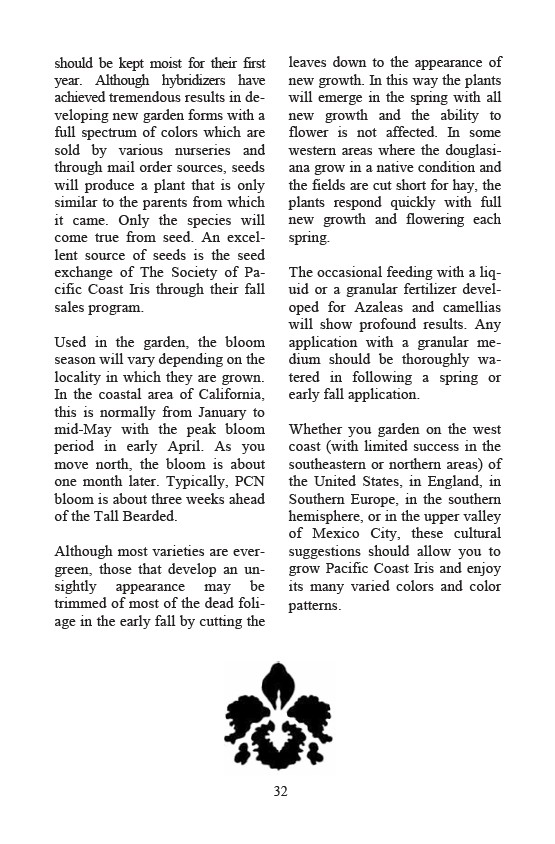
32
should be kept moist for their first
year. Although hybridizers have
achieved tremendous results in de-veloping
new garden forms with a
full spectrum of colors which are
sold by various nurseries and
through mail order sources, seeds
will produce a plant that is only
similar to the parents from which
it came. Only the species will
come true from seed. An excel-lent
source of seeds is the seed
exchange of The Society of Pa-cific
Coast Iris through their fall
sales program.
Used in the garden, the bloom
season will vary depending on the
locality in which they are grown.
In the coastal area of California,
this is normally from January to
mid-May with the peak bloom
period in early April. As you
move north, the bloom is about
one month later. Typically, PCN
bloom is about three weeks ahead
of the Tall Bearded.
Although most varieties are ever-green,
those that develop an un-sightly
appearance may be
trimmed of most of the dead foli-age
in the early fall by cutting the
leaves down to the appearance of
new growth. In this way the plants
will emerge in the spring with all
new growth and the ability to
flower is not affected. In some
western areas where the douglasi-ana
grow in a native condition and
the fields are cut short for hay, the
plants respond quickly with full
new growth and flowering each
spring.
The occasional feeding with a liq-uid
or a granular fertilizer devel-oped
for Azaleas and camellias
will show profound results. Any
application with a granular me-dium
should be thoroughly wa-tered
in following a spring or
early fall application.
Whether you garden on the west
coast (with limited success in the
southeastern or northern areas) of
the United States, in England, in
Southern Europe, in the southern
hemisphere, or in the upper valley
of Mexico City, these cultural
suggestions should allow you to
grow Pacific Coast Iris and enjoy
its many varied colors and color
patterns.